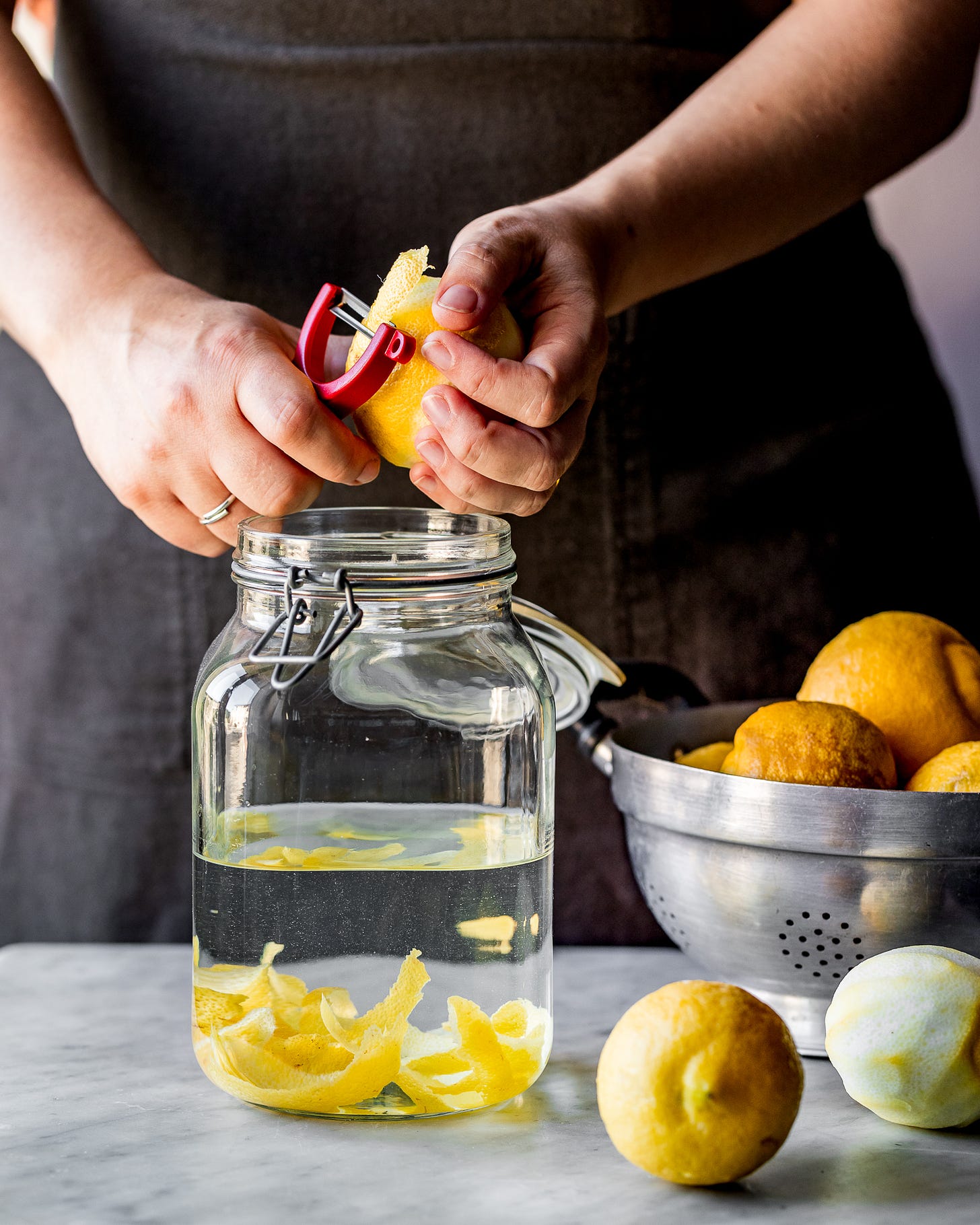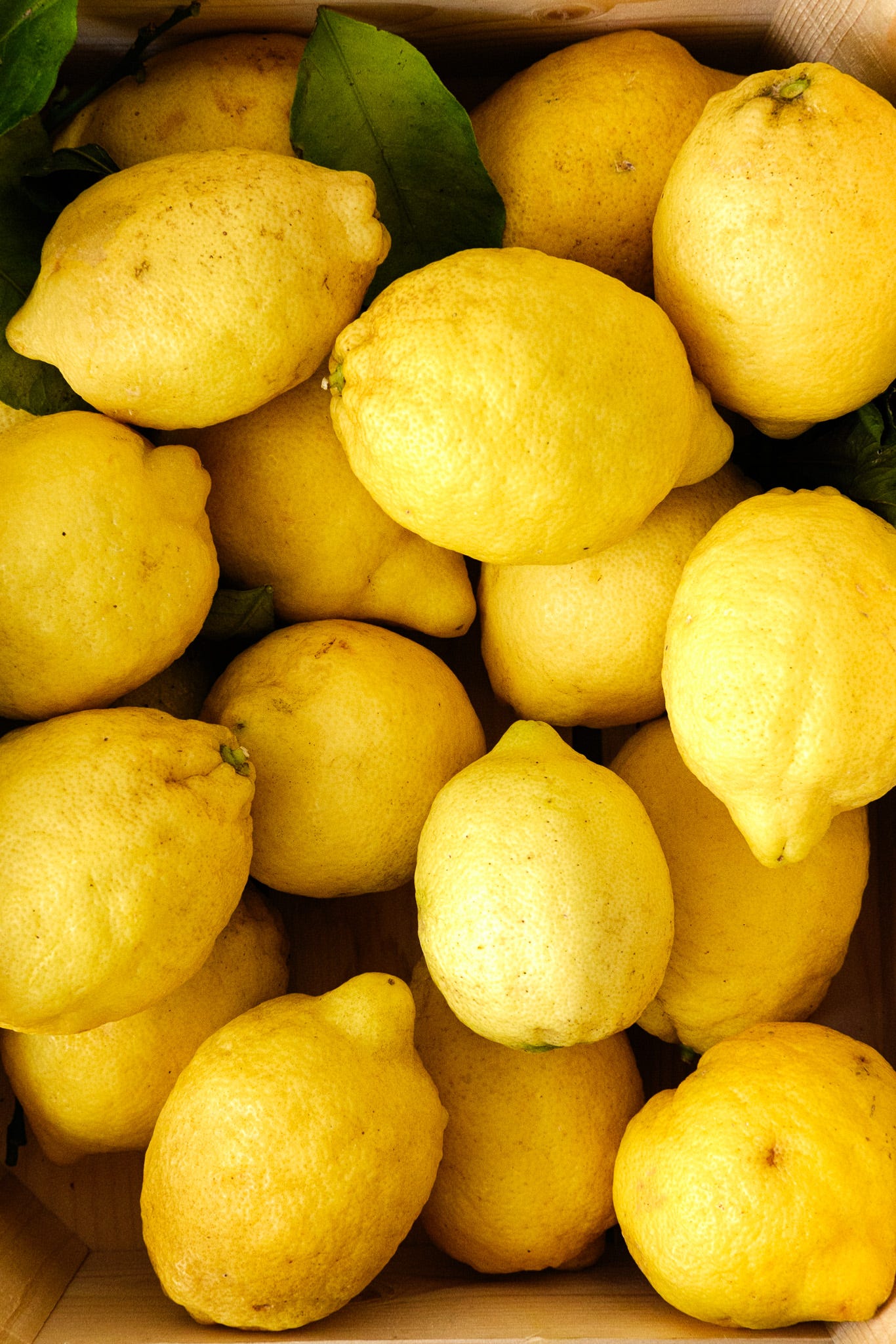How to make limoncello from scratch...
...and make it 10 thousands times better than the one you can get in a supermarket
This newsletter is a reader-supported publication. We love Letters From Tuscany, it is like having our independent publication: we test, photograph, and write each recipe just for you, to bring a little taste of Italy to your kitchen, for you and your family. We’re trying to keep things as free as possible, but if you enjoy what I write and want access to exclusive weekly recipes, and if you are at a point in your life to support our newsletter, please consider becoming a paid subscriber. Thank you!
Walking along the steep streets of the Costiera Amalfitana and Sorrento, you are surrounded by postcard views and bottles of limoncello hanging from every shop. A typical opalescent lemon liqueur of the Italian South, limoncello is now a world-famous digestif.
Forget the sickling sweet commercial limoncello, a gluey yellow syrup with no depth of flavour. Homemade limoncello is fresh, bright, zingy, and uncomplicated. All you need are good organic lemons, sugar, alcohol, and time.
Keep your limoncello in the freezer, and bring it to the table at the end of a meal with its frozen bottle and a tray of clinking tiny glasses. It will immediately be welcomed with enthusiastic cheers. Pour a finger of chilled limoncello and sip it slowly as a digestif, savouring its lemony taste.
Limoncello is also a smart ingredient when it comes to baking: add a splash to a cake syrup, use it to flavour pastry cream, soak babà, the delicious Neapolitan yeasted sponge cake, to prepare a summer cocktail, or make a sorbet out of it.
Two cakes with limoncello from the blog archive:
Torta Margherita with limoncello and custard. The recipe is the classic Artusi’s recipe for torta margherita, but lemon juice has been replaced with limoncello, homemade, imperfect, robust, and intense. The cake and the custard are both gluten-free, light and scented by the freshness of limoncello
Corn cake with limoncello. This cake has a rustic texture given by corn flour and it is so deliciously scented thanks to the addition of limoncello. A scent that fills the kitchen while baking, but gives its best when the cake is cold and a bite explodes in your mouth with all its aromas.
Notes.
Choose organic lemons with thick skin. Do not discard lemons once peeled. Instead, squeeze them to make lemonade, or freeze the juice into ice cubes. Or, as I just made today, use them in a jam: their pectin will make the jam thicker in an easy, natural way.
You can find the recipe I’ve been using to make limoncello for years underneath the fold. If you ever joined one of our cooking classes or attended one of our dinners, we probably poured you a tiny glass of limoncello.





